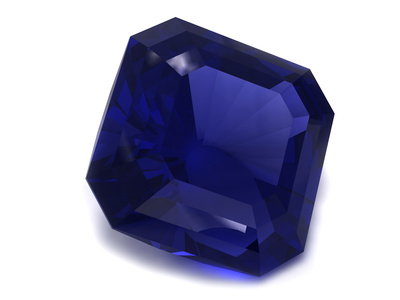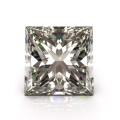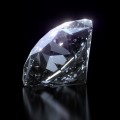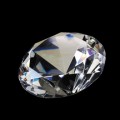What Are Champagne Diamonds?
Champagne diamonds occur in nature and are simply stones that have a light to dark brown color. Australia, Africa and Siberia are home to the most exquisite diamonds of this kind. The Australian Argyle Diamond Mine is the largest champagne diamond producer and exporter.
Most diamonds mined have some sort of yellowish or brownish tint, which is considered undesirable, and this is why such stones sell at a discount compared with colorless diamonds.
The most valuable champagne diamonds, however, have a darker hue than the typical low-grade yellowish diamonds and are not considered second-rate stones.
Although champagne diamonds are natural, some of the stones sold by the jewelry industry have been colored artificially using heat and high-pressure treatment.
Nevertheless, these champagne-colored stones are also real diamonds.
What Are Chocolate Diamonds?
Chocolate diamonds are simply a variation of champagne diamonds, only at the darkest end of the color spectrum. Chocolate diamonds is a term that was popularized by the jewelry company Le Vian, which actually owns a trademark on that name.
How Is the Quality of Champagne Diamonds Evaluated?
The quality of champagne diamonds is graded in the same way as that of other diamonds: The main quality characteristics are color, clarity, cut, and carat weight.
Of these, color deserves special attention, as it is often not graded using the same scale that is used for regular white diamonds.
Color Grades for Champagne Diamonds
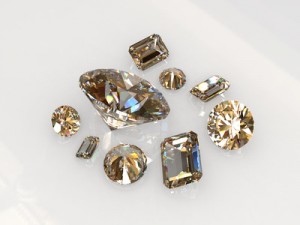
Champagne diamonds
In general, the color of fancy-color diamonds is assessed on three main dimensions: hue, tone, and saturation.
Hue refers to the visible color of the stone. In the case of champagne diamonds, their hue can be classified as brown (some graders might use the word “champagne” instead).
Tone refers to how dark the color is. Compared with other brown diamonds, champagne diamonds are on the lighter end of the tone scale. However, the most valuable champagne diamonds are those with a darker tone, as they are rarer.
Saturation is the level of intensity of the diamond’s color. In general, the more saturated the brown in a champagne diamond is, the more valuable the stone.
Check out a selection of champagne/brown diamonds.
There is a grading scale developed specifically for champagne diamonds, and it uses grades from C1 to C7. Here is the meaning of each grade:
- C1 and C2: Light Champagne
- C3 and C4: Medium Champagne
- C5 and C6: Dark Champagne
- C7: Cognac
The GIA (Gemological Institute of America) uses a different scale to grade the color of diamonds, and in that system, Light Champagne (C1 and C2) would be graded with letters from N to V and classified as Very Light Yellow or Light Yellow.
Medium Champagne (C3 and C4) would be considered Light Yellow and assigned a letter grade from W to Z.
Dark Champagne (C5 and C6) and Cognac (C7) are graded on a different scale in the GIA system – one created specifically for fancy-color diamonds.
On that scale, these diamonds are classified as either Fancy Brown or Fancy Dark Brown, depending on their tone and saturation.
More: Browse diamond ring settings and design your own ring.
Clarity Grading for Champagne Diamonds
The clarity of champagne diamonds is evaluated in the same way as that of other diamonds. As a rule, the fewer visible flaws there are in a stone, the more valuable it is.
Clarity is not as important for darker champagne diamonds, as flaws in them tend to be better hidden by their color.
Cut Quality of Champagne Diamonds
In general, the more proportional the cut of a diamond, the more brilliance the stone has, and the more expensive it is.
For darker champagne diamonds, brilliance becomes less important as it is less visible. For these stones, the primary consideration regarding cut is whether it maximizes the diamond’s color by enhancing its intensity.
Famous Champagne Diamonds
Many celebrities and trendsetters are toasting to the beauty of champagne diamonds.
Jennifer Lopez, Jessica Simpson and Halle Berry have sparkled in these brown-colored stones.
Royalty has also been known to sport them.
The King of Thailand received the Golden Jubilee, the largest natural cut diamond found in the world, which happens to be a champagne diamond, in celebration of his five decades on the throne.
Where to Buy Diamond Jewelry?
We recommend James Allen (read review) because you can see a 360-degree video for any diamond before buying it.
Blue Nile is another reputable diamond retailer we recommend.


